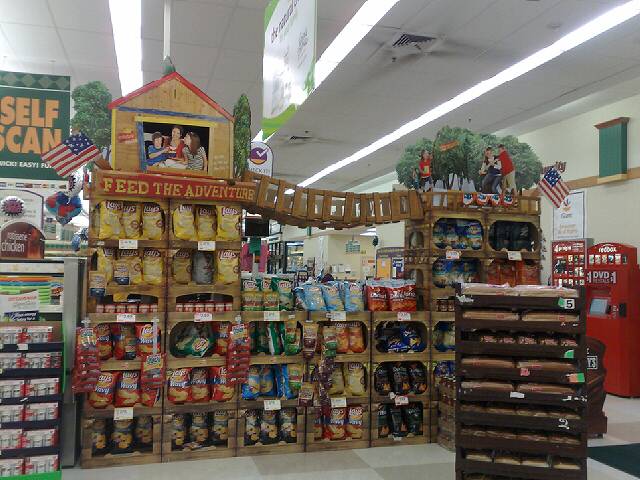Visiting your local grocery store can sometimes feel like navigating a Turkish bazaar, as you make your way through cluttered aisles filled with product displays, overflowing endcaps and bins full of bargains.
But that’s not the case in many stores anymore. If you’ve noticed that your store is cleaner and more streamlined lately – you may have the coronavirus to thank.
“With space at a premium,” the market research company IRI wrote in a recent blog post, “efforts to accommodate social distancing have significantly cut into retailers’ display space.”
With stores making changes to ensure the recommended six feet of space between shoppers, IRI’s research found that “retailers now provide an average of five fewer displays compared to the previous year, with both perimeter and in-aisle displays taking a hit.” And the displays that do remain, feature fewer items.
That’s good news for shoppers who don’t want to be forced to rub elbows with others as they try to navigate their shopping cart around cardboard displays blocking their path. But it could also be bad news – because less space to promote products could result in fewer promoted products and, ultimately, higher grocery prices.
“There is a basic rule of thumb in retail: The more stuff in the aisle and the more promotional the environment, the higher the sales,” market research executive Paco Underhill wrote in an op-ed for the New York Times back in 2015. “Traditionally, the American consumer is very willing to put up with crowded aisles and a certain level of physical discomfort to find something at a good price, or a perceived one. The more crowded, the greater the reward.”
But that was then. The coronavirus pandemic has upended retail norms just as it has nearly every other aspect of everyday life.
With fewer promoted products and weekly sales in general, stores and manufacturers have had less need for eye-catching displays. And “supply chain challenges have impacted merchandising for high-demand items such as paper towels, leaving manufacturers wary to invest in display if they can’t meet demand,” IRI noted.
So high-visibility locations like endcaps increasingly have been used to promote products that aren’t even on sale. If a store receives a shipment of toilet paper or hand sanitizer, for example, an endcap display of those items could encourage shoppers to buy them while they’re available – even if they’re being sold at full price.
IRI’s research found that sales of “feature and display” items – meaning products that are both advertised in a store’s weekly circular and featured in an in-store display – are down 13.6% this year as compared to last year. But sales of “display only” items – which are not necessarily on sale – are up 11.4%.
So beware – just because you see an endcap display of appealing items, don’t assume you’ll be getting a good deal. They may well be selling at full price.
Instead of displaying promoted products featured in the weekly circular, store displays increasingly feature “sanitizing products such as bleach, cleaning wipes and soap,” IRI found, as well as “categories uniquely suited to quarantine. These range from at-home iterations of professional services such as hair coloring kits, as well as stress-busting activities like baking.” If those items are already selling, there’s no reason to put them on sale. But putting them in a prominent place in the store, could create even greater demand, no matter the price.
For brands that do want to promote their products in the weeks and months to come, they’re going to find there’s a lot more competition for less featured space in stores. For retailers, there will be less opportunity to move merchandise with prominent displays. And for shoppers, there may be fewer actual deals featured in the displays that remain.
So if you’ve ever wished your stores could be less crowded with colorful cardboard displays and overflowing bins of bargains – be careful what you wish for. Because the lack of clutter in your local grocery store, could end up costing you.
Image source: ShashiBellamkonda ![]()
















